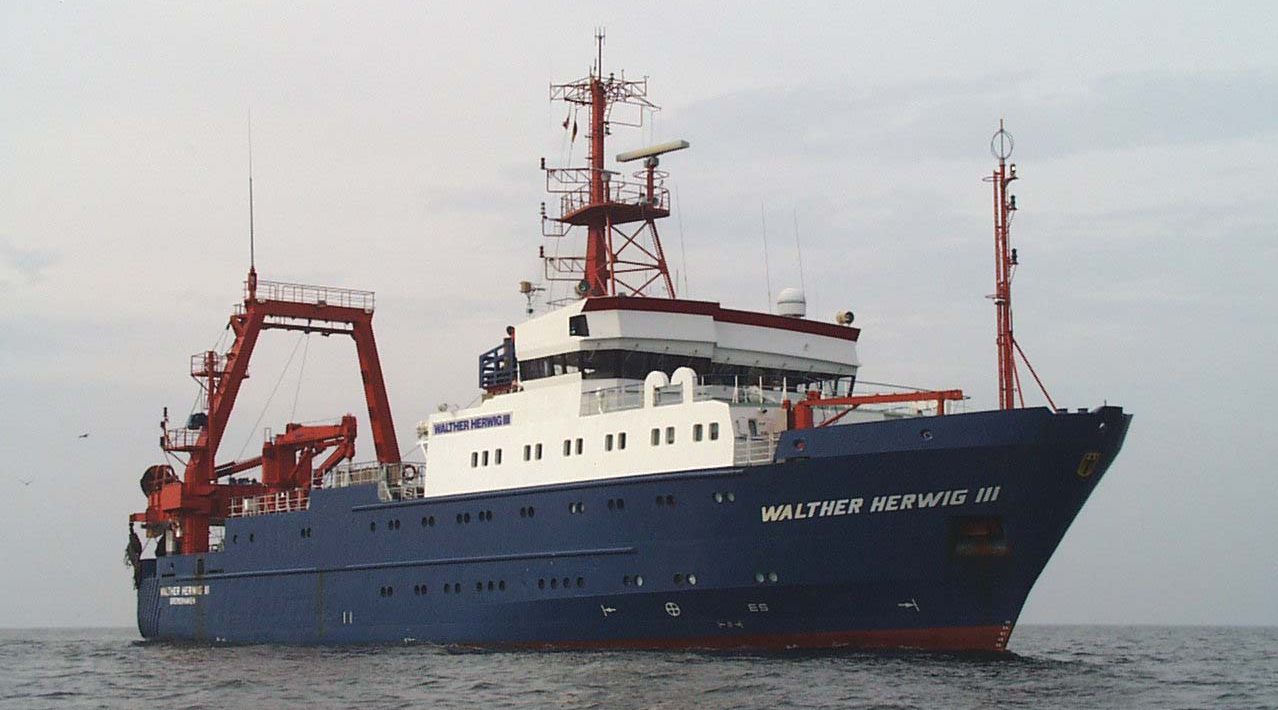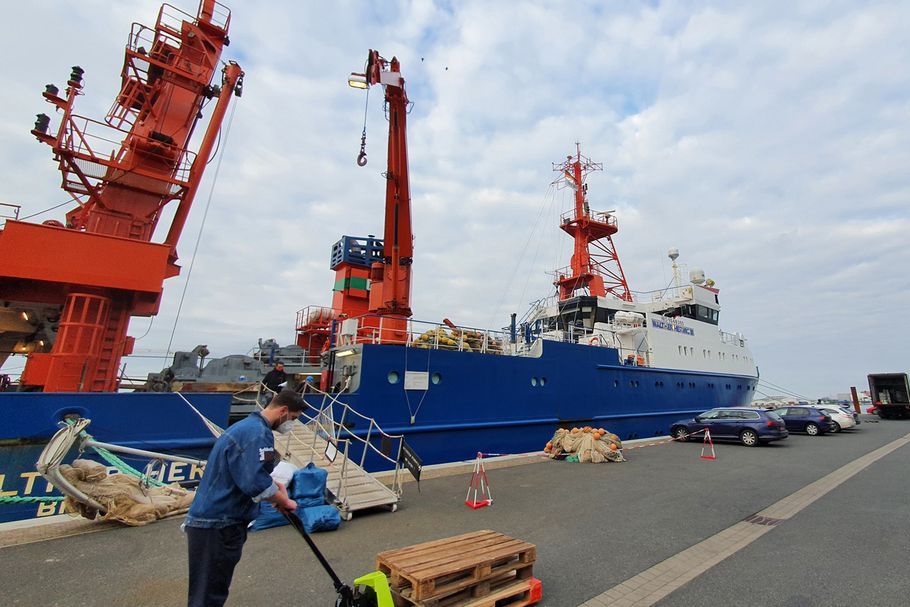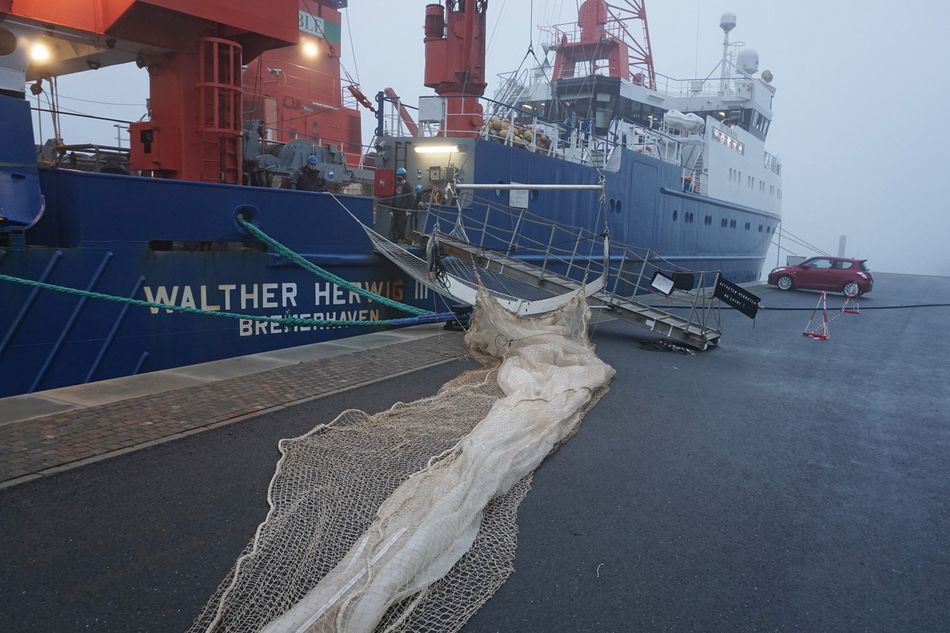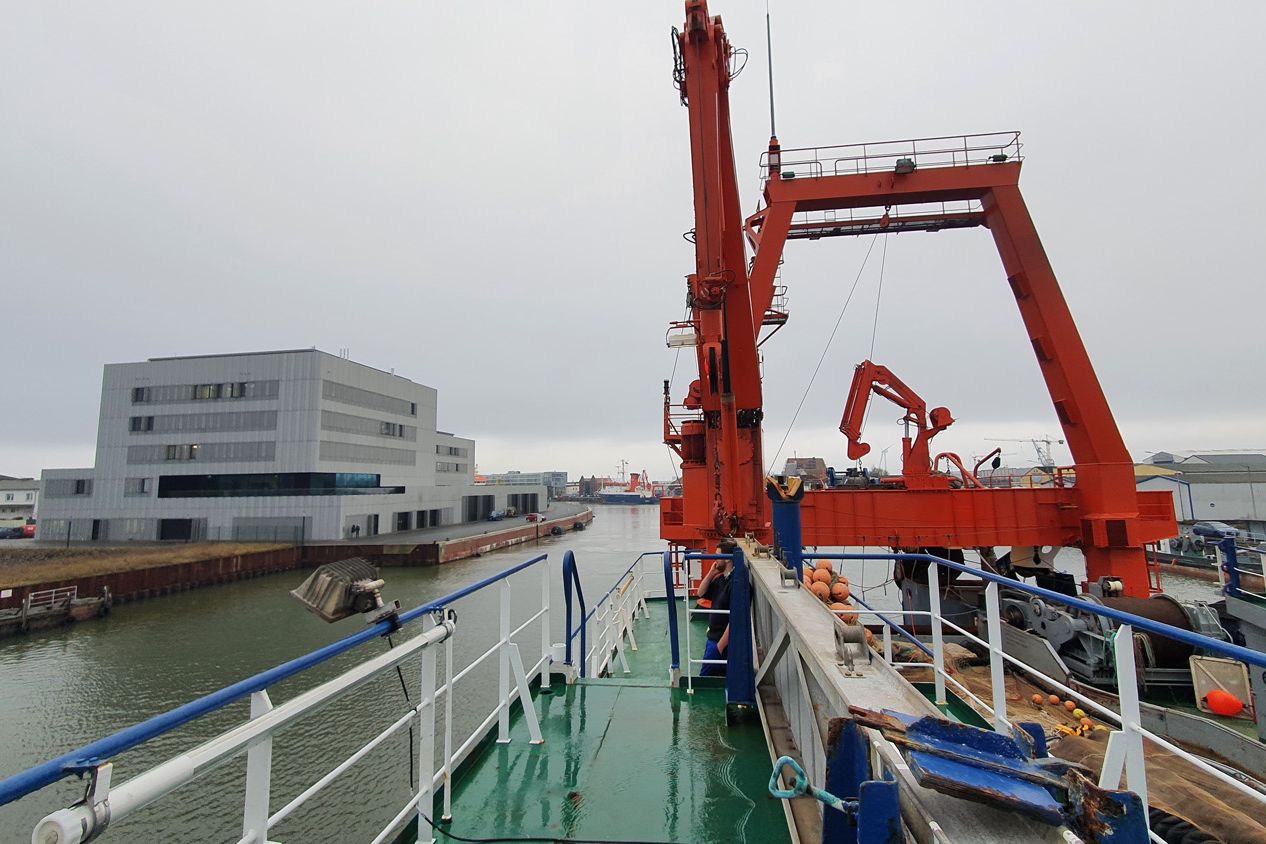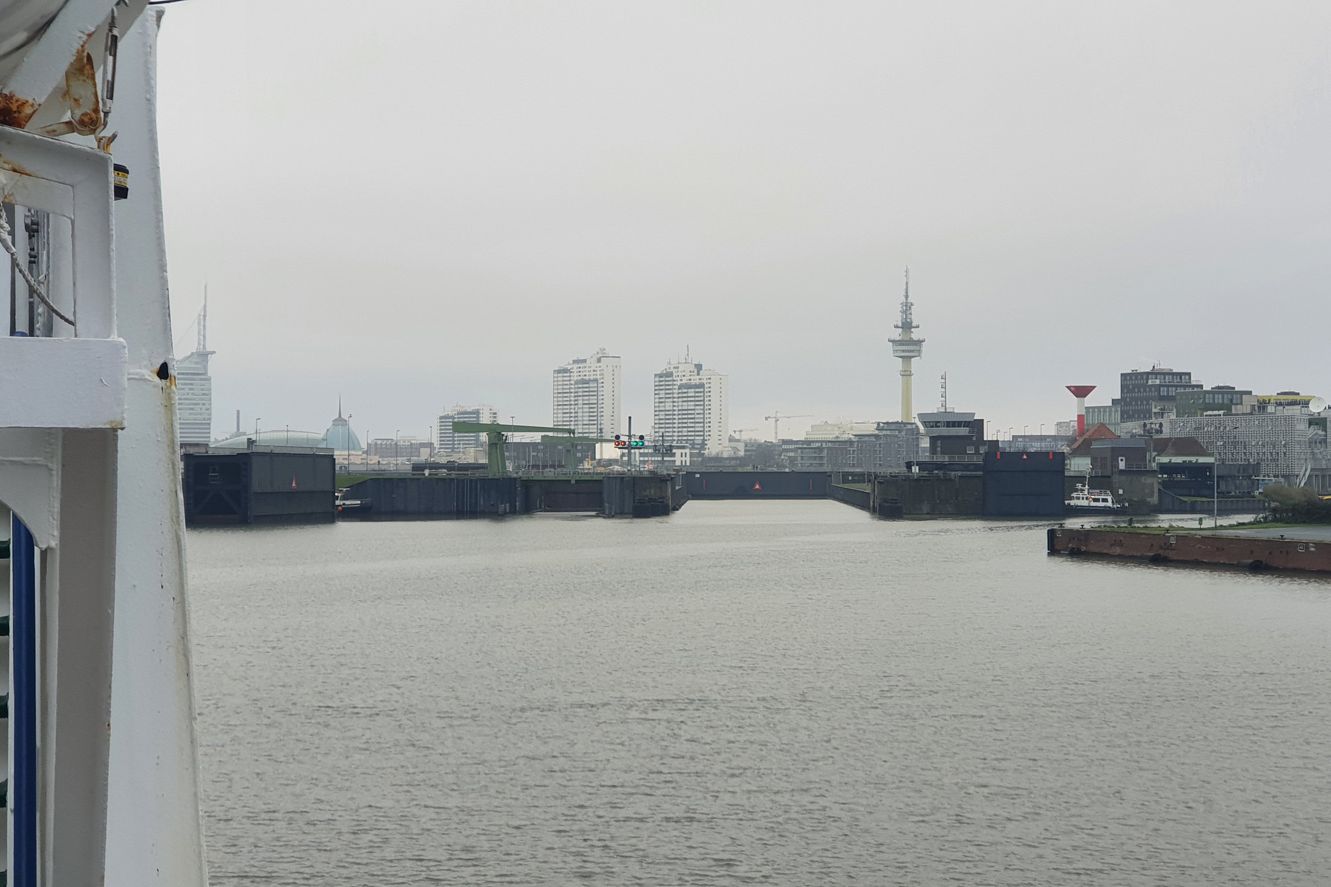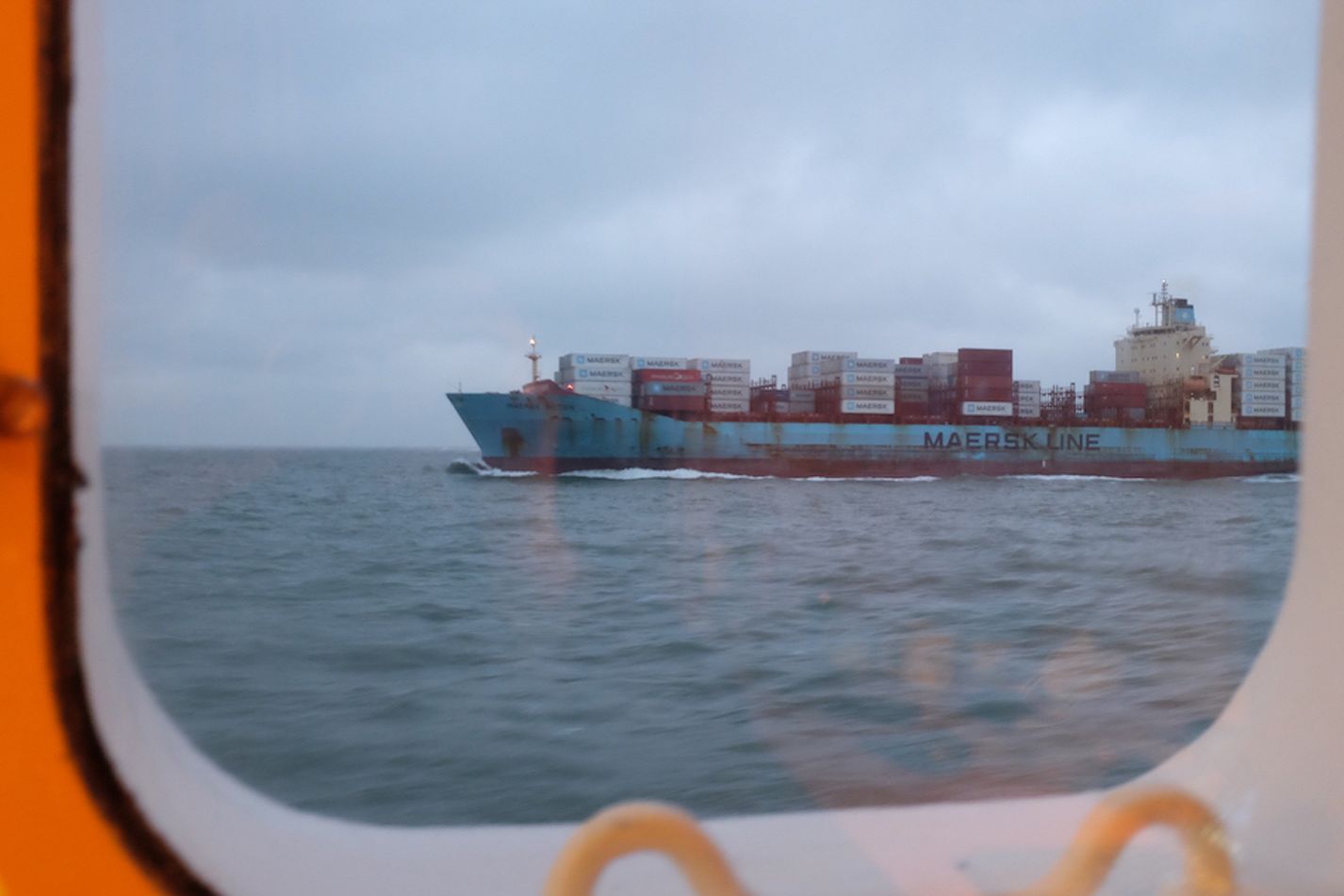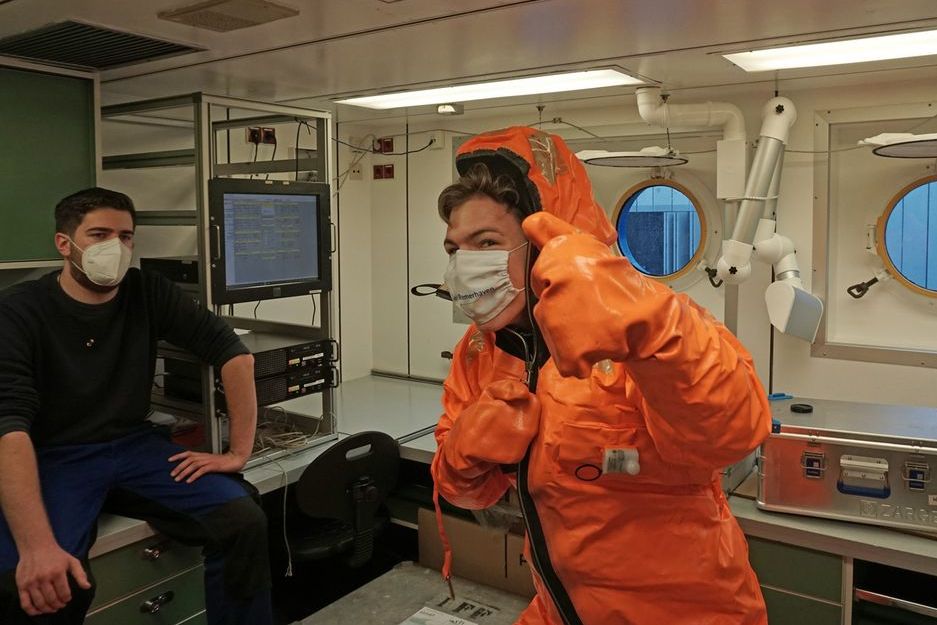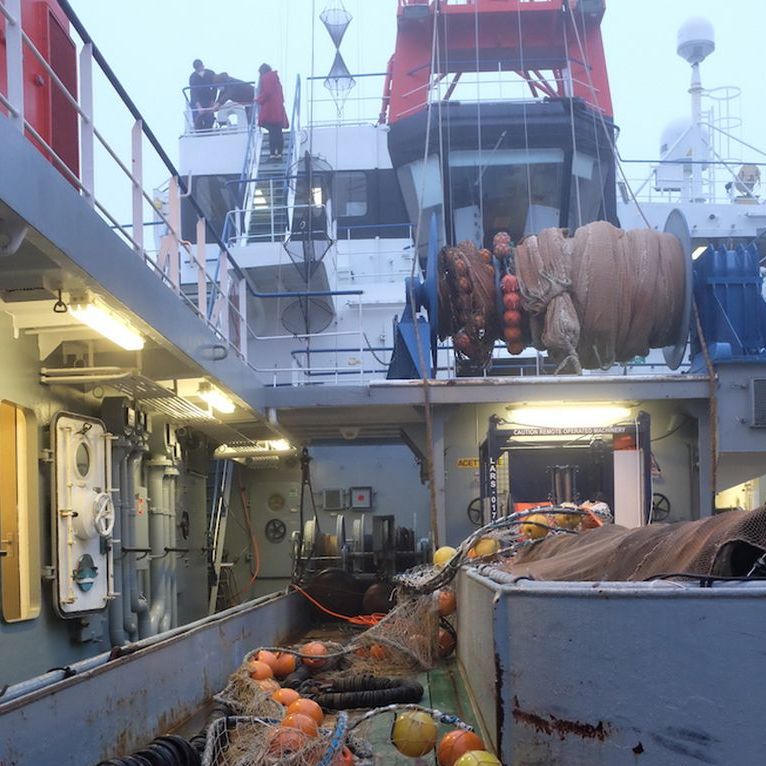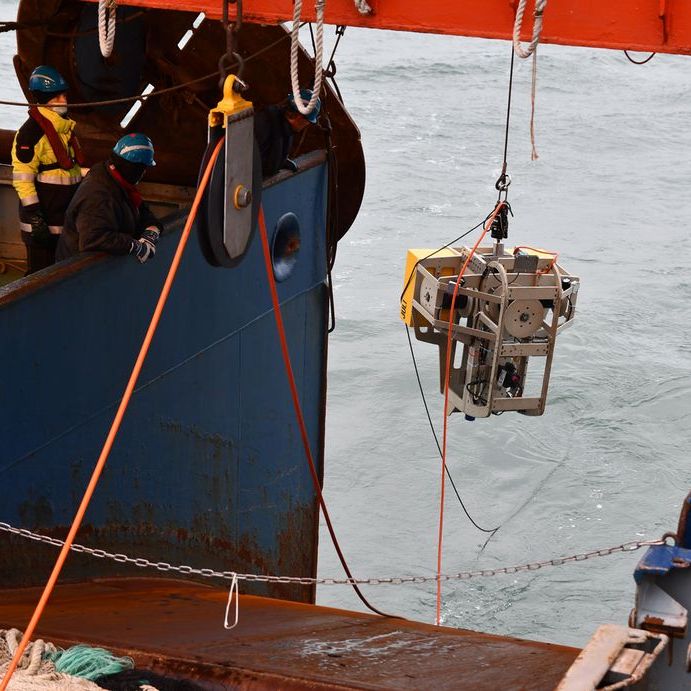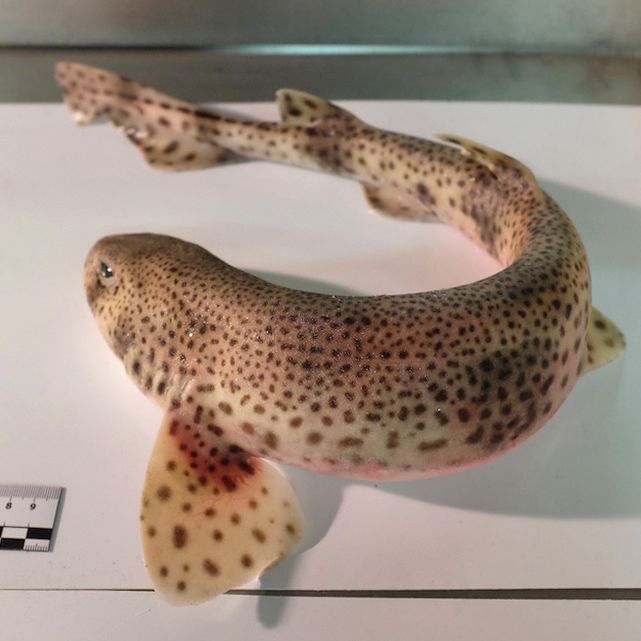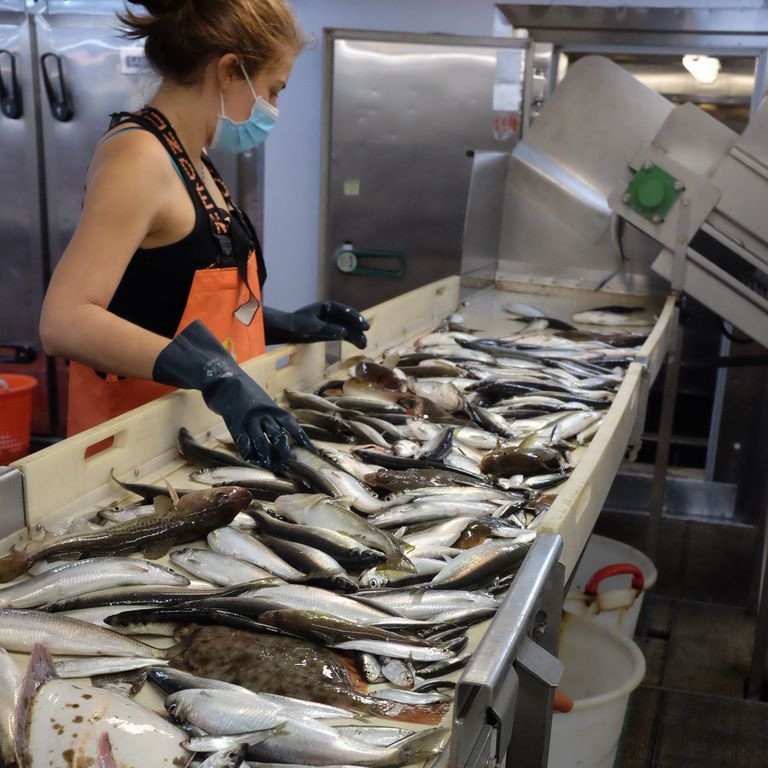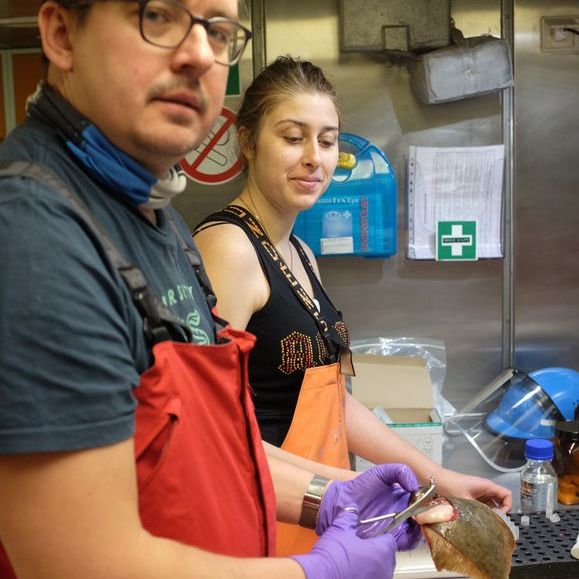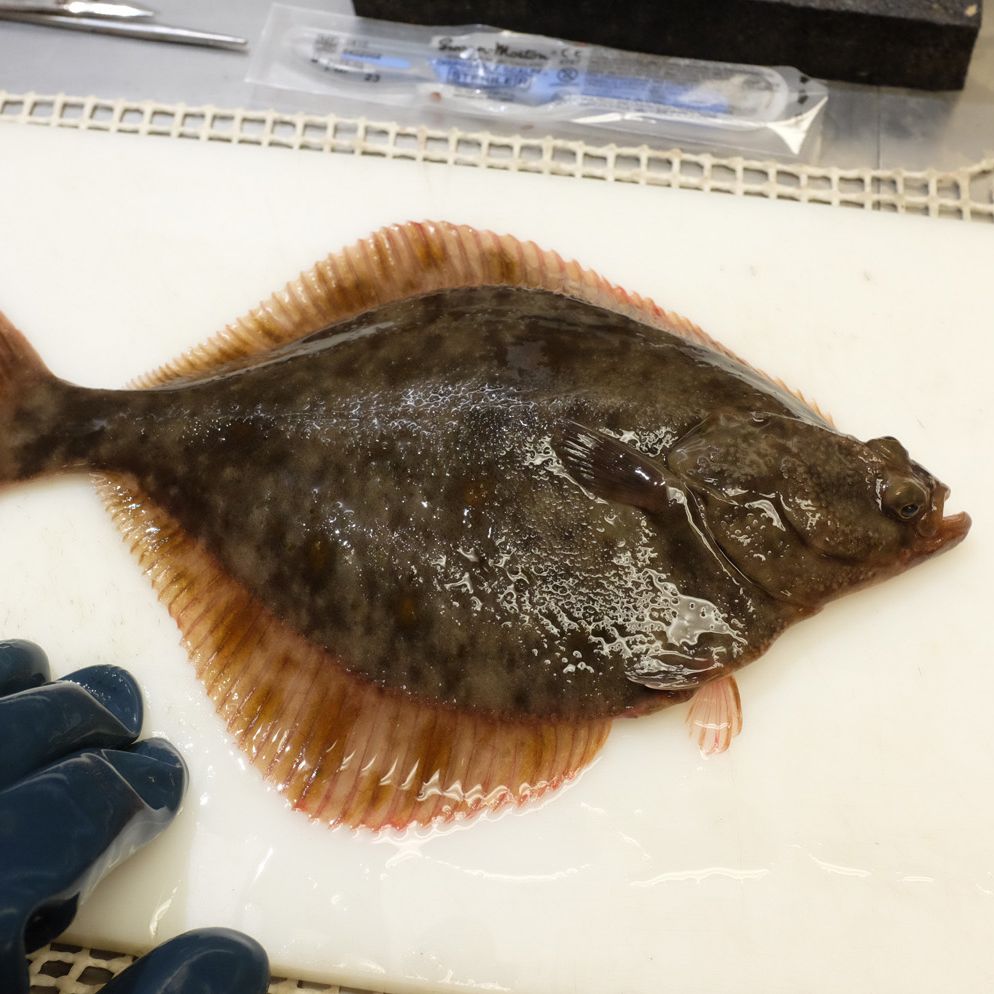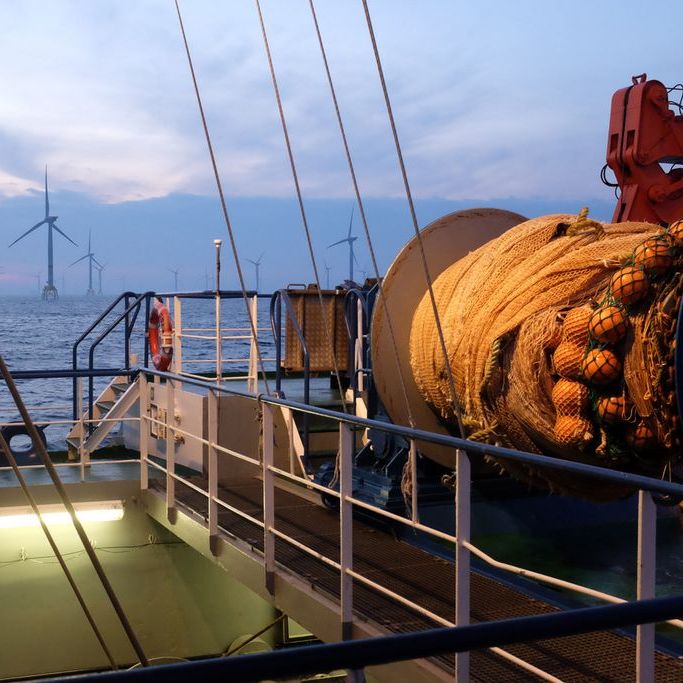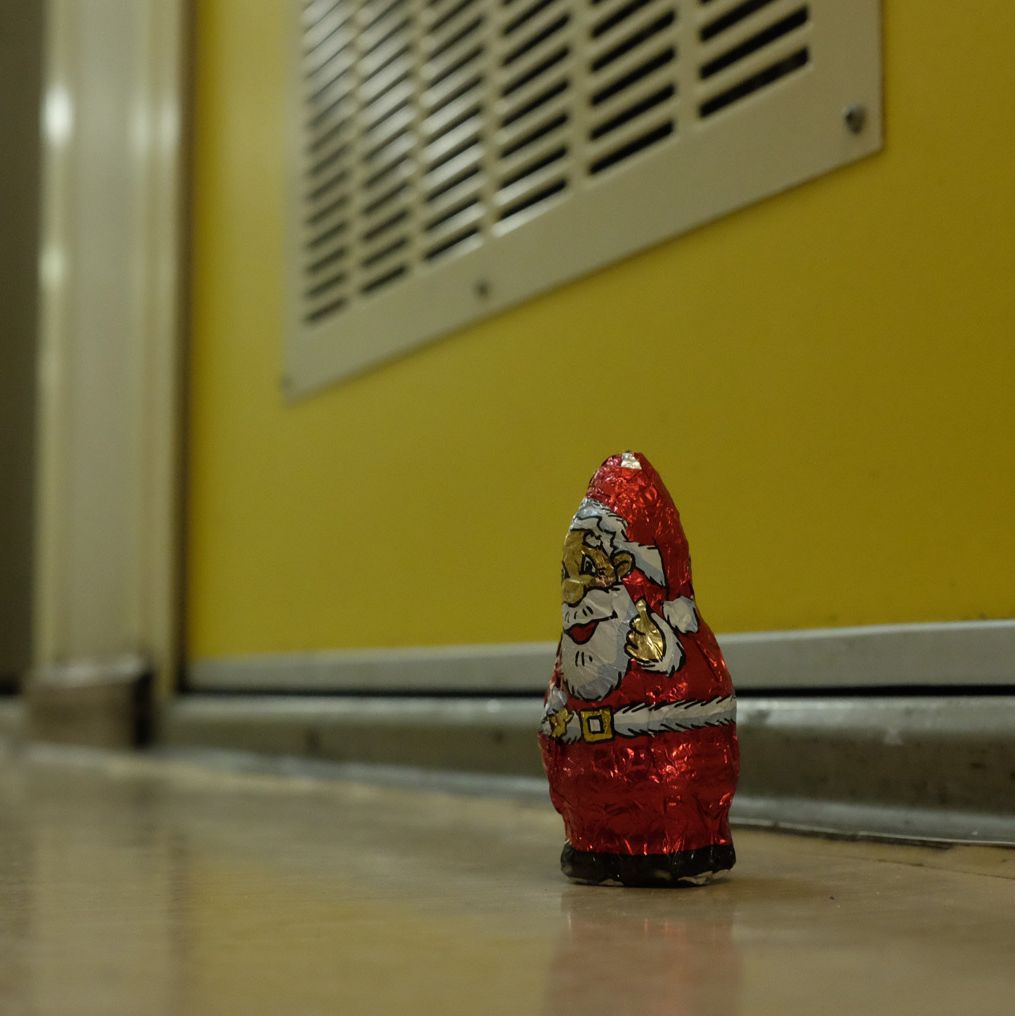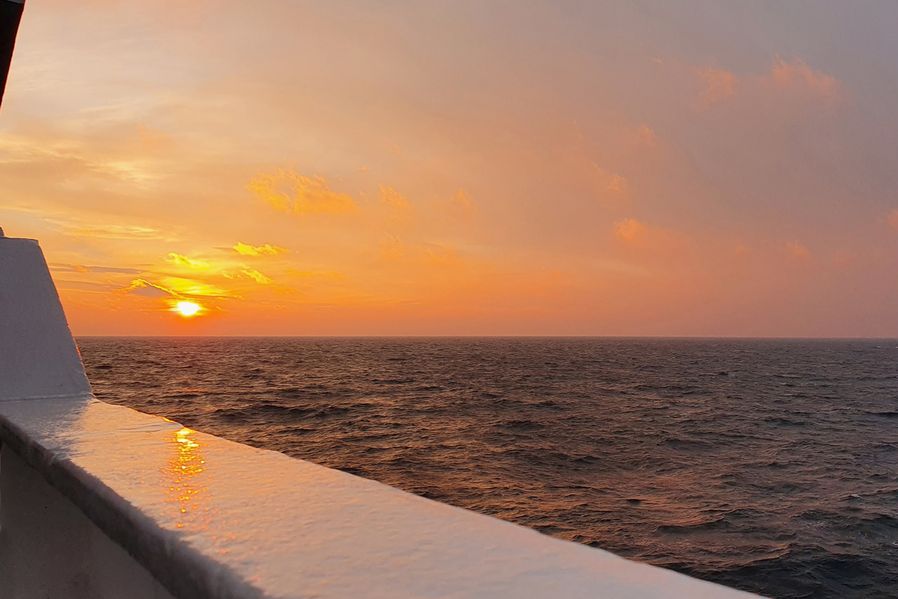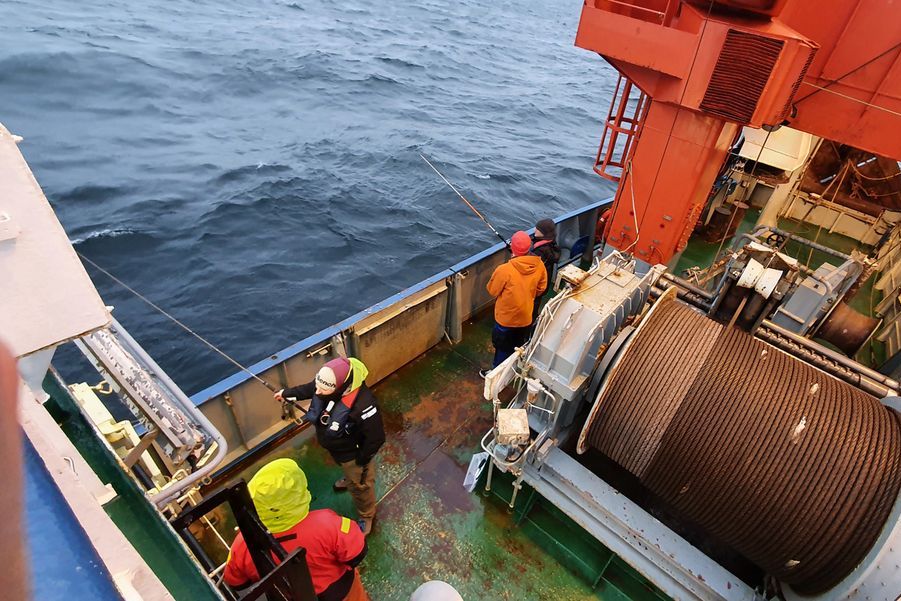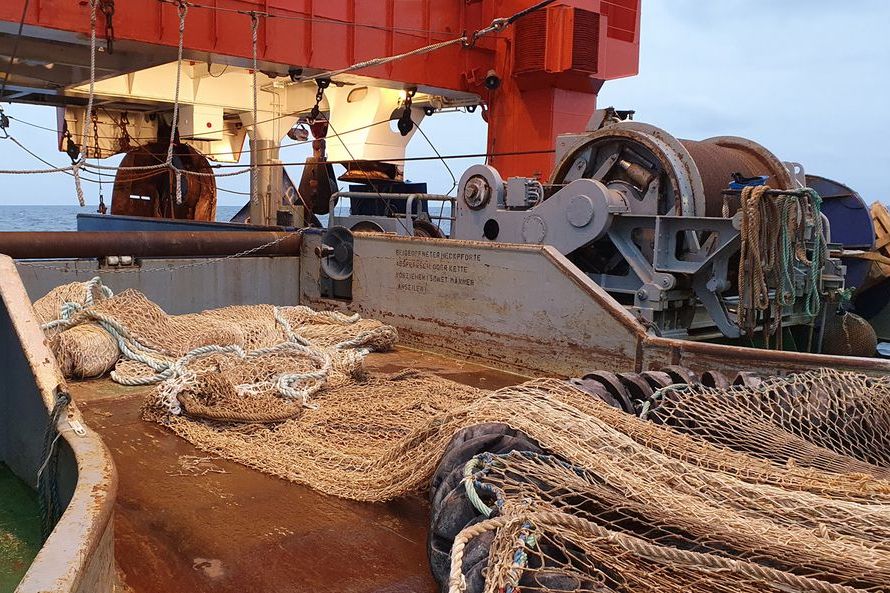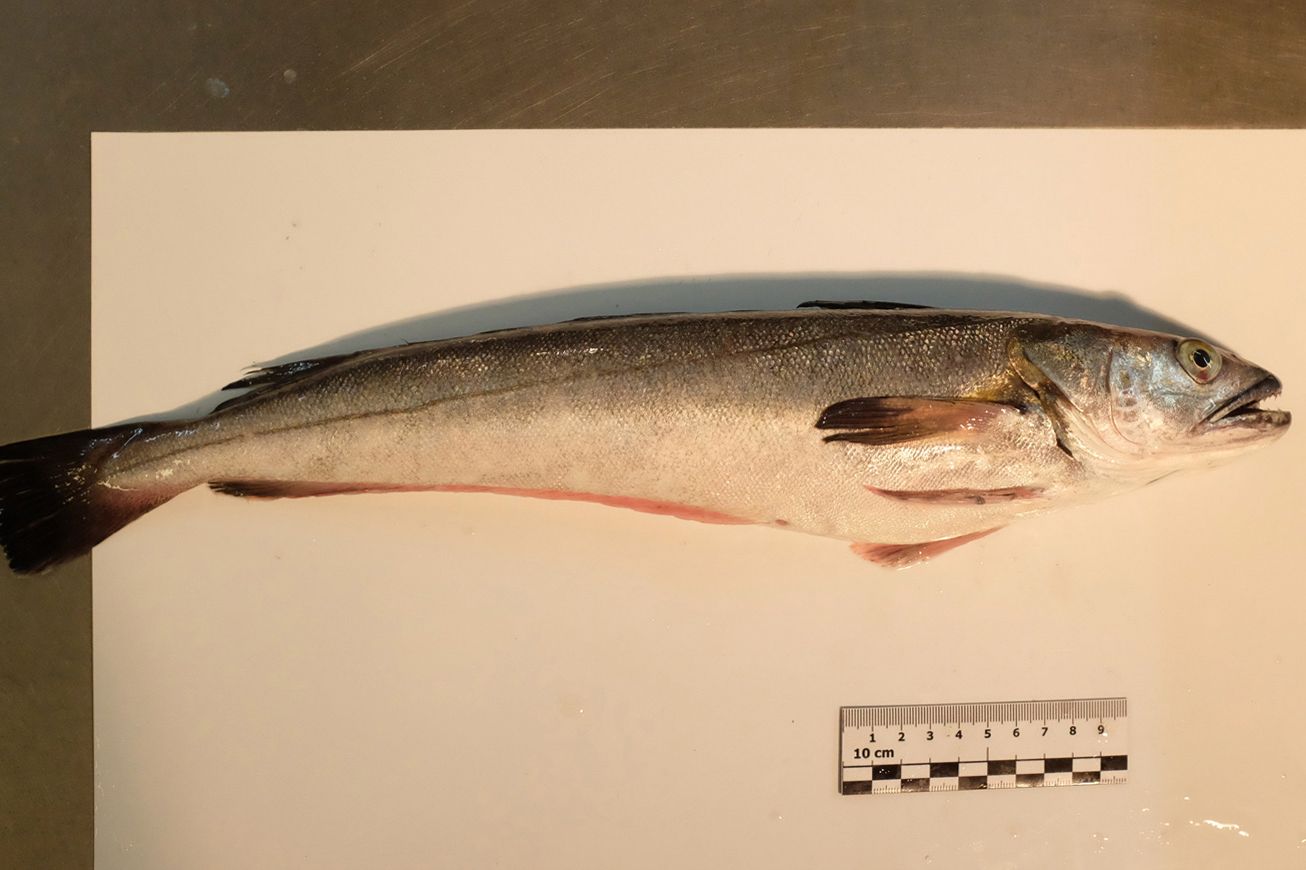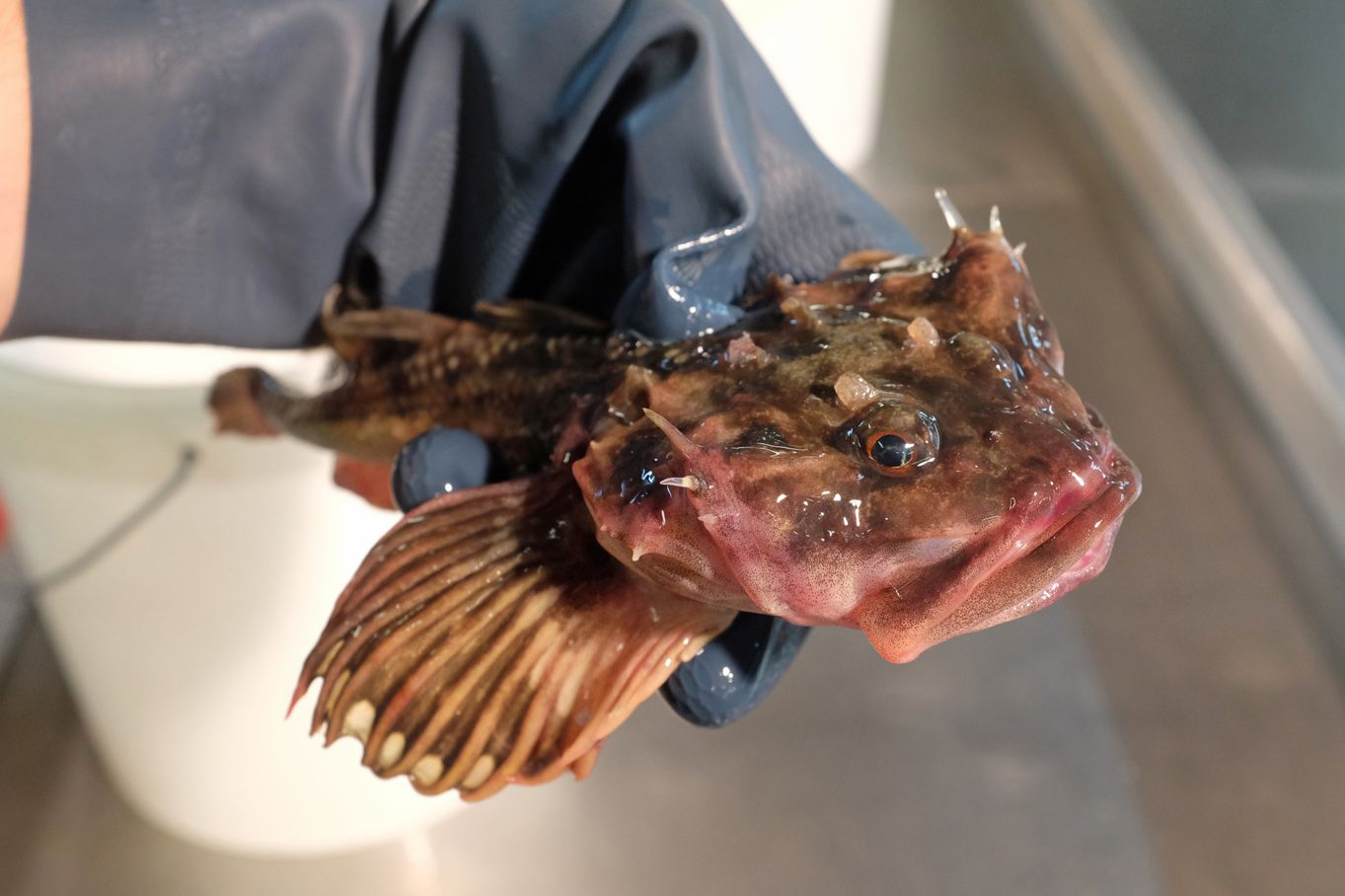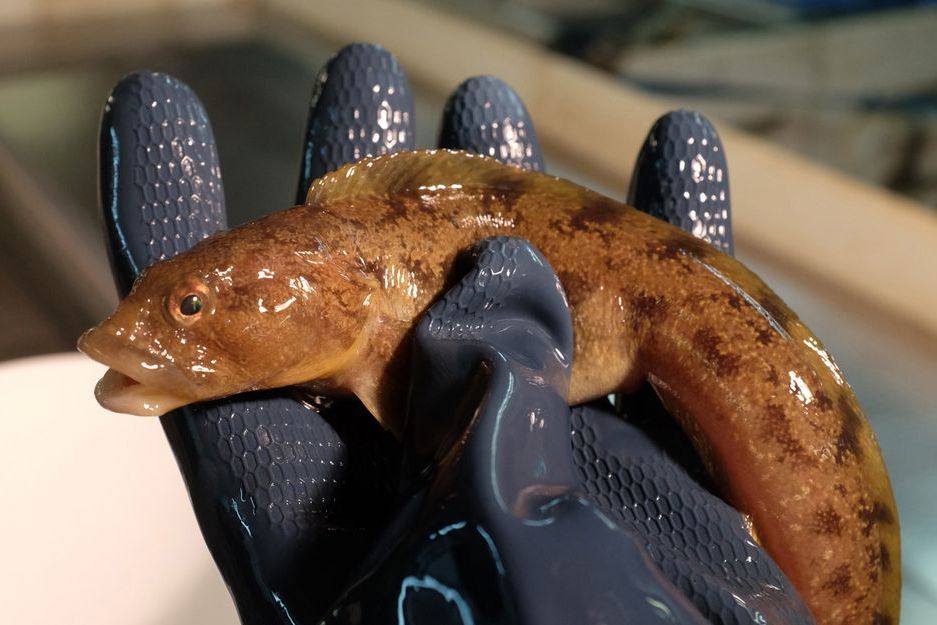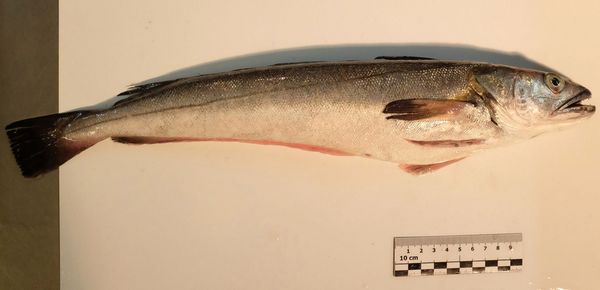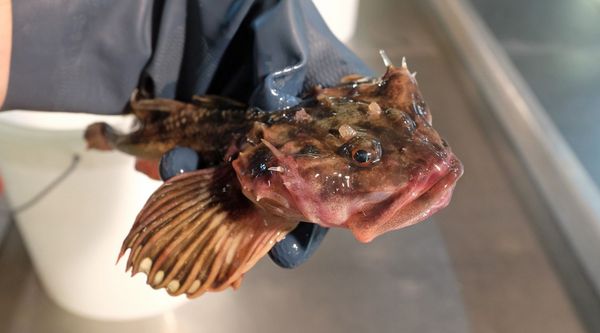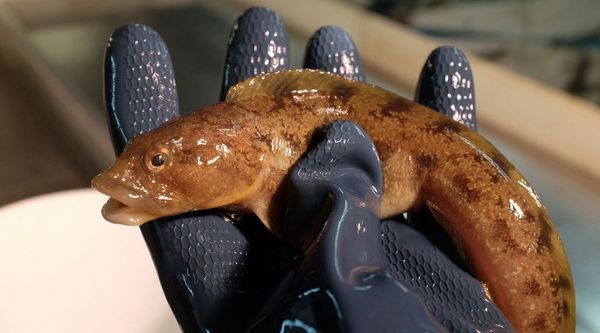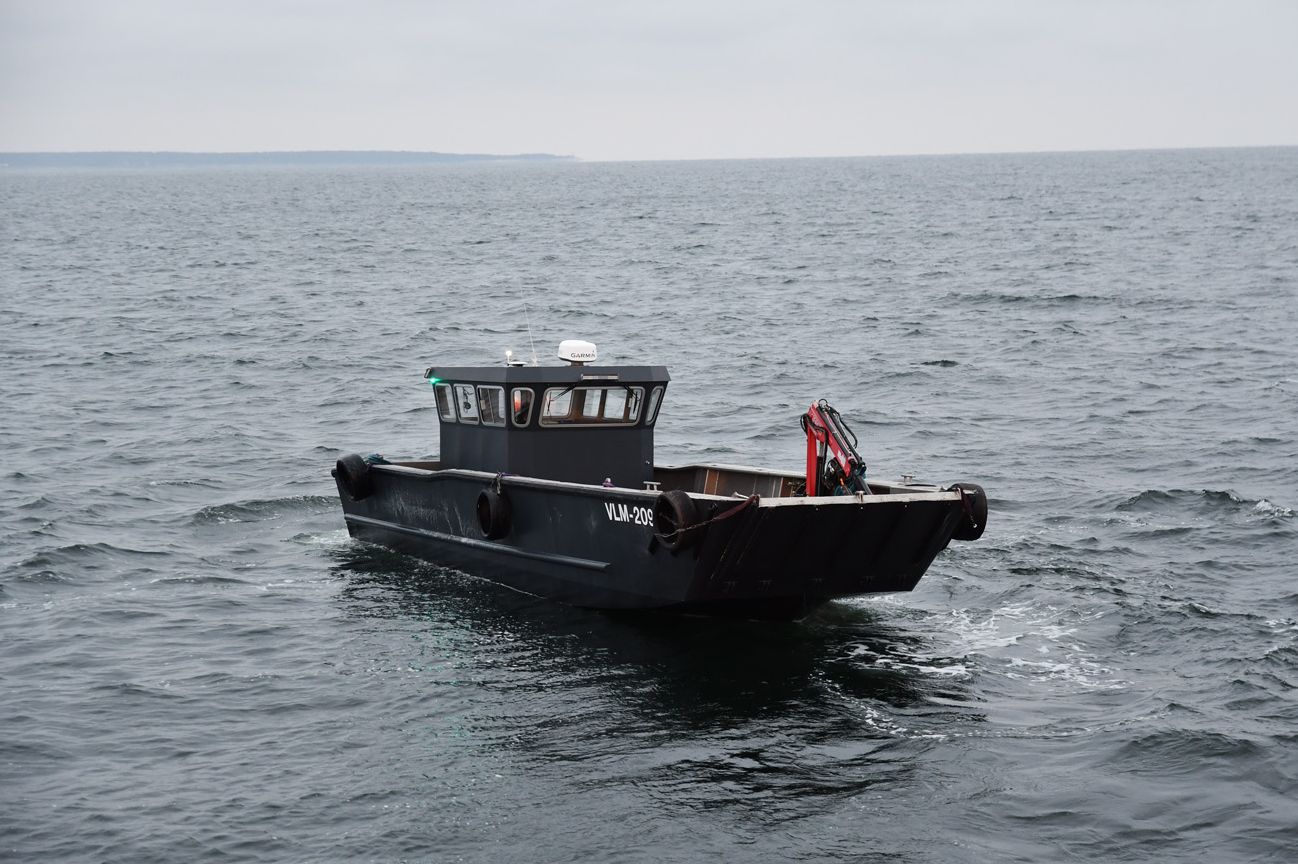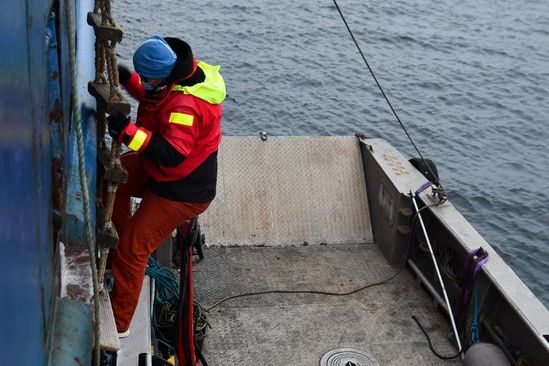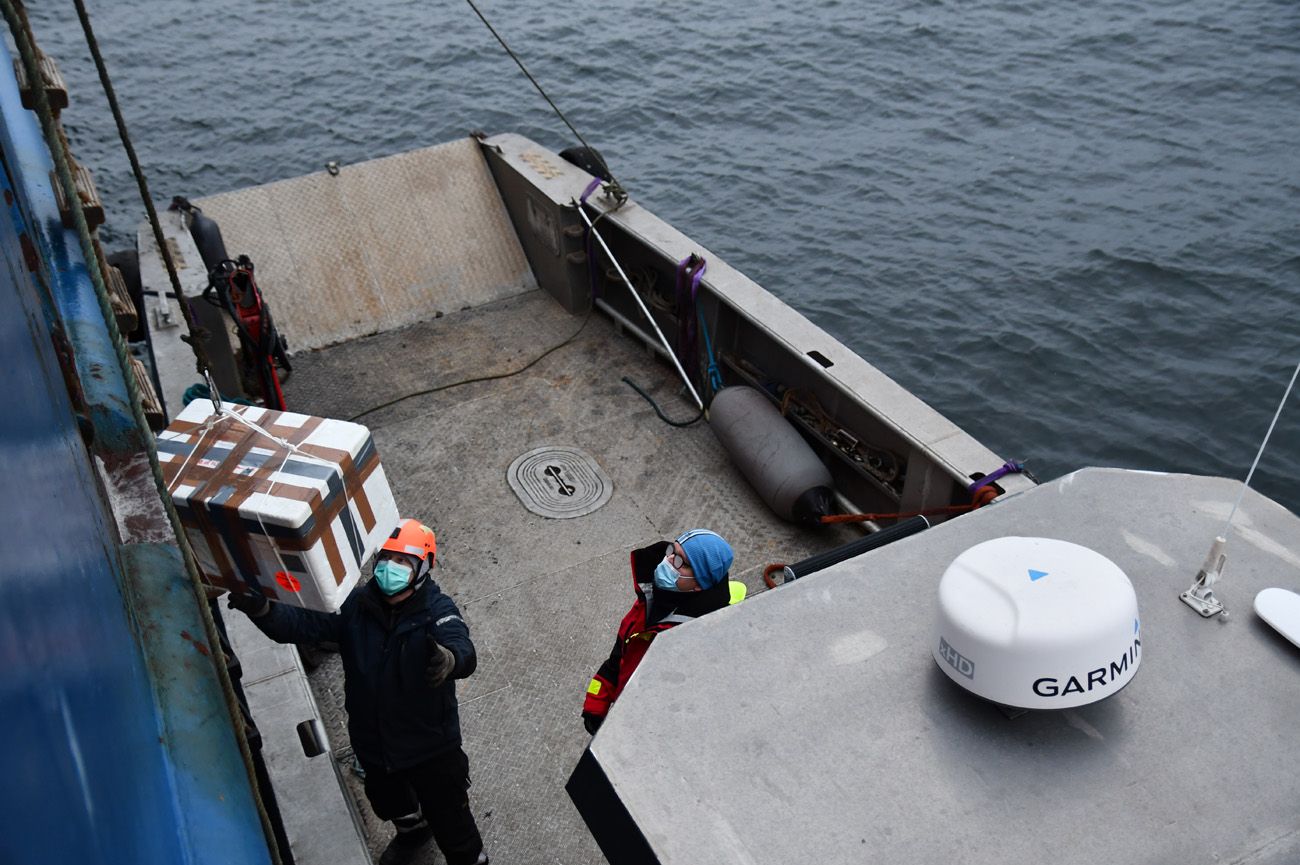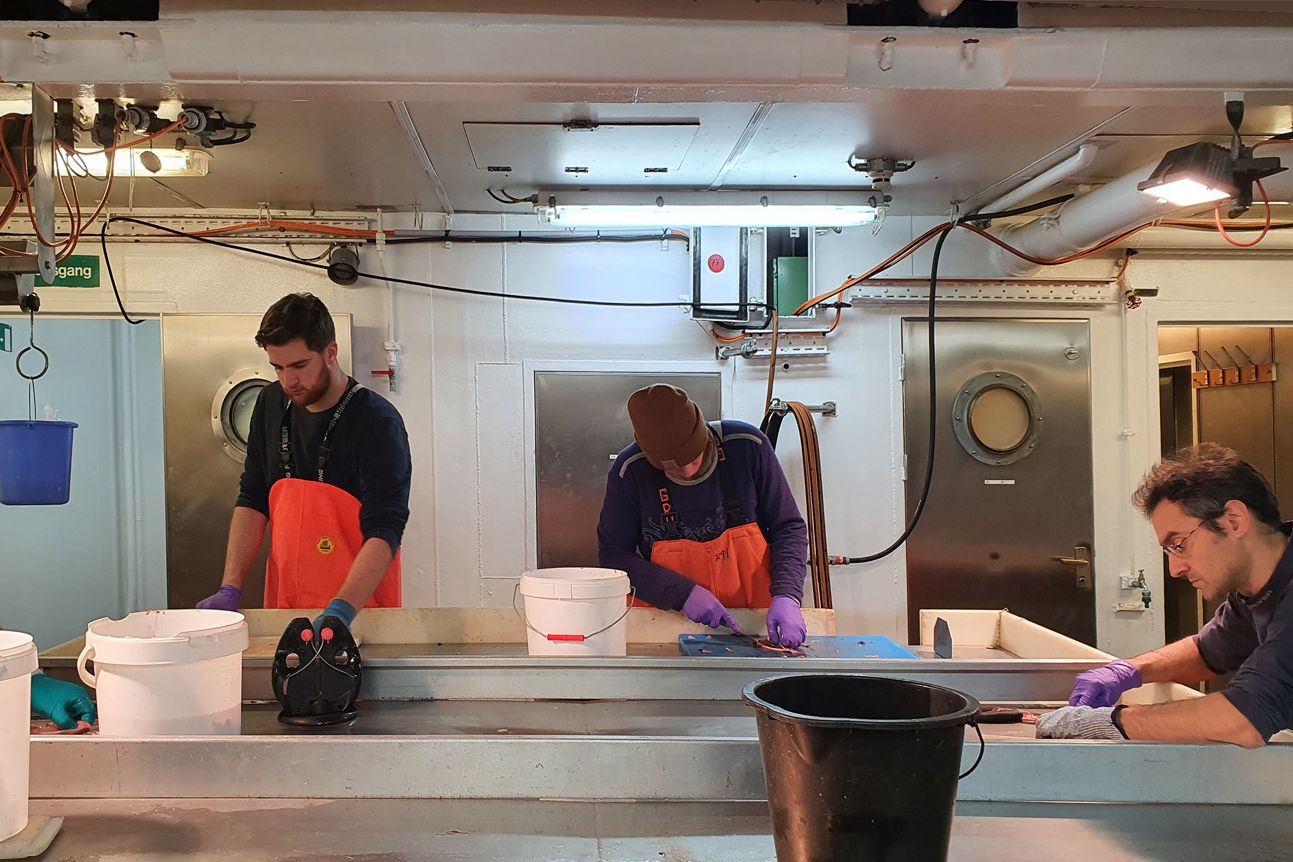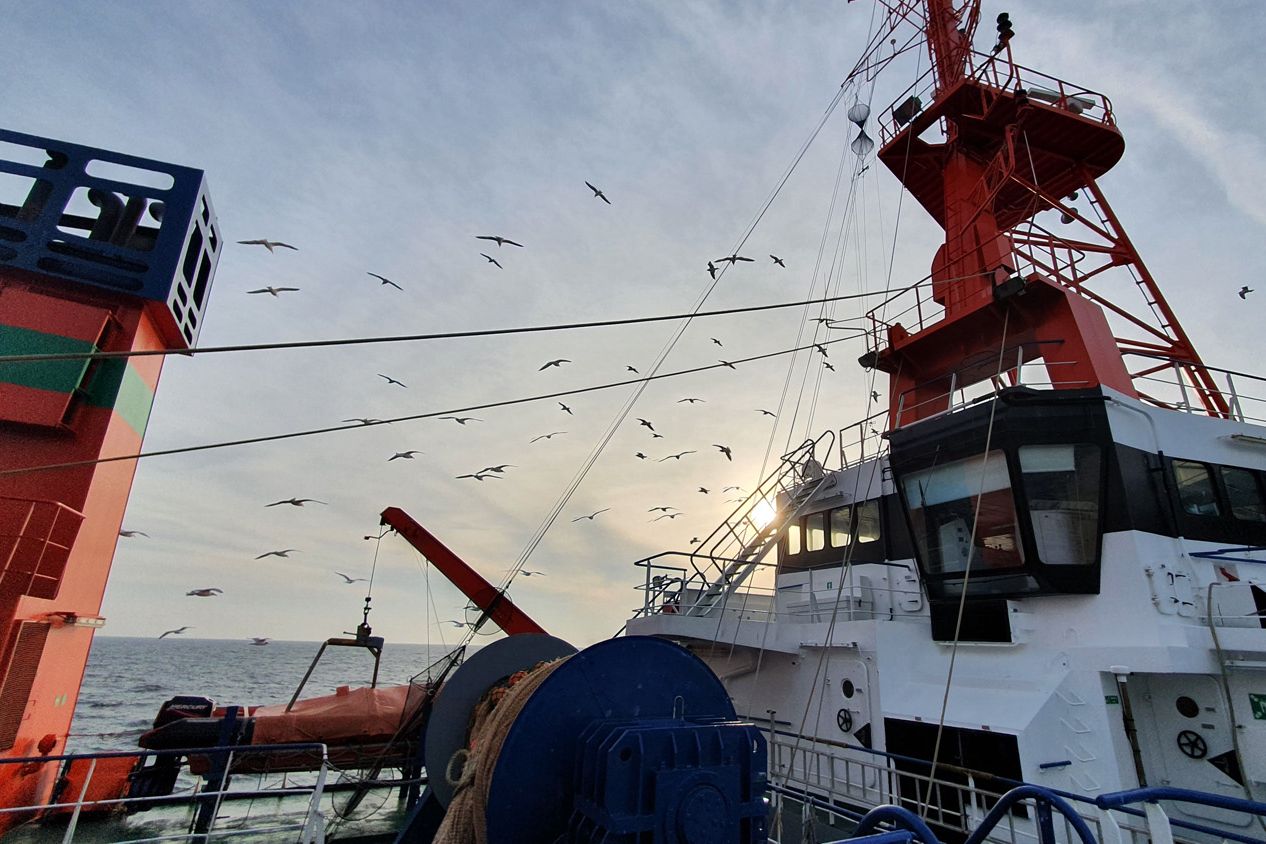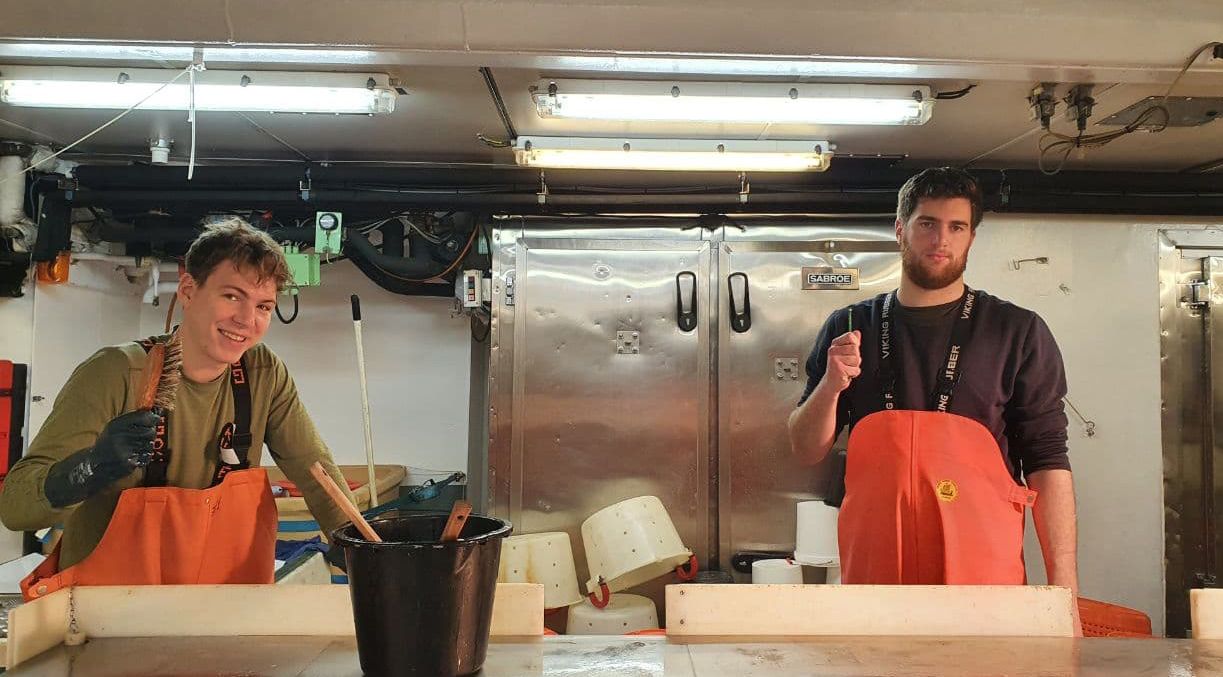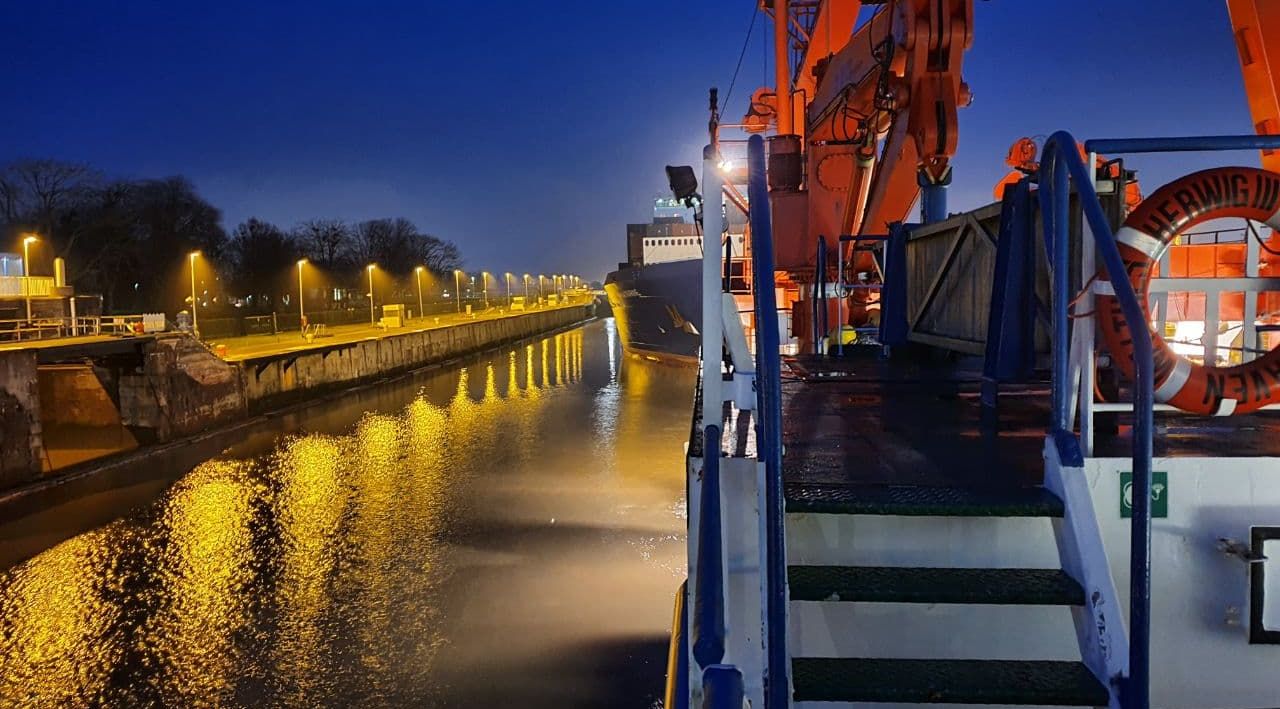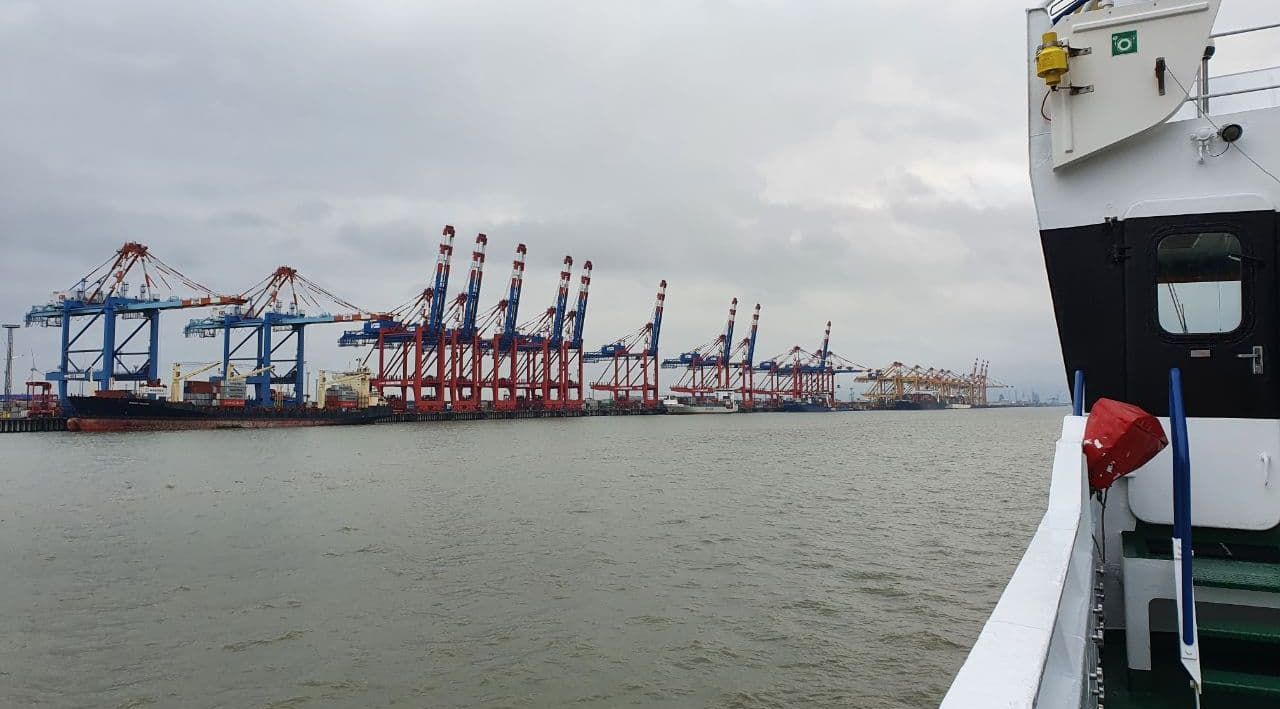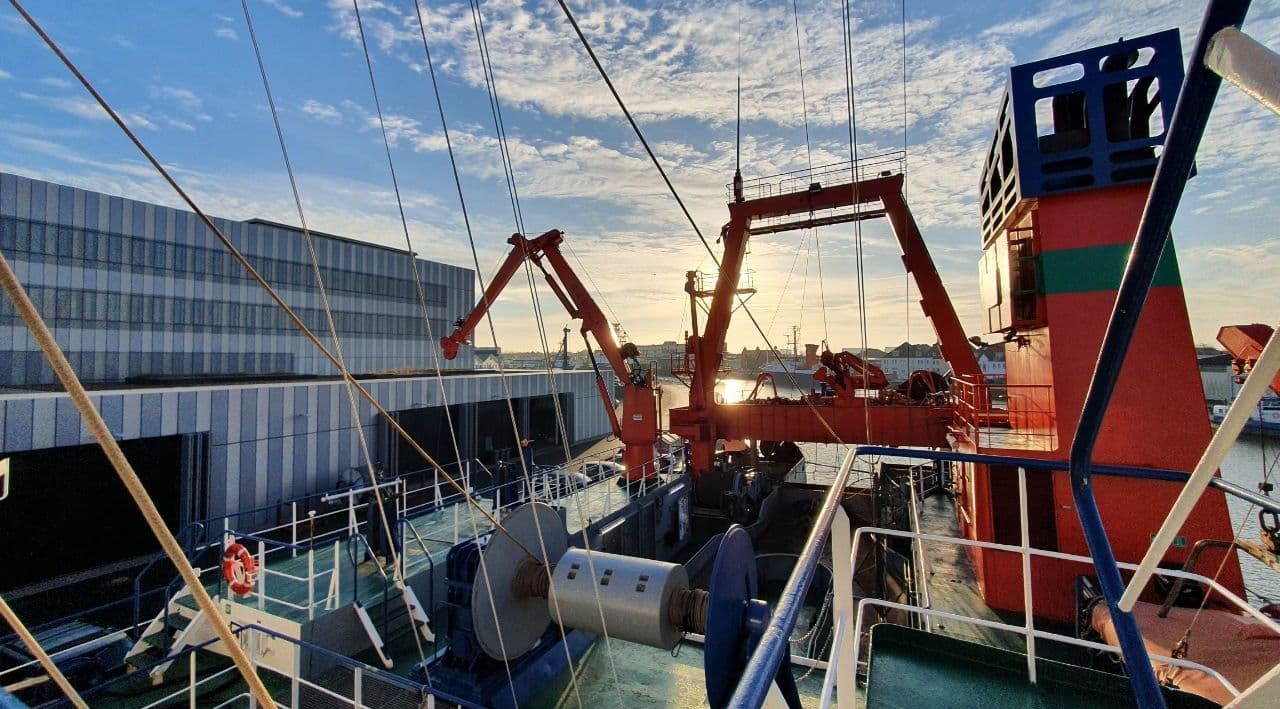Sea blog
Walther Herwig III, 411th cruise
Pedro Nogueira and the team
Duration: December 1 to 20, 2020
Survey area: North Sea and Baltic Sea
Purpose: Investigations on biological pollutant effects / marine environment. During the cruise, fish samples are taken for analysis of radioactive substances, heavy metals and organic pollutants, and waste is collected in accordance with the ICES protocol.
Cruise leader: Dr. Pedro Nogueira, Thünen Institute of Fisheries Ecology
The work programme starts in the North Sea, then continues into the Baltic Sea, stopping in Rostock and continuing towards the Gulf of Finland with surveys in the Bornholm Basin, Eastern Gotland Basin and the Northern Baltic Sea.
We set off early on the morning of 30 November. The destination is not yet the Walter Herwig III, but the Corona Test Centre in Bremerhaven. After all, it is important that we all test negative so that the trip can go according to plan.
And indeed - not a single positive result! Nevertheless, we still wear mouth and nose protection in the early days and make sure we keep enough distance, because better safe than sorry.
We don't leave until 1 December, so we still have plenty of time to set up the labs and tighten everything down. We also get a safety briefing and a briefing for the CTD probe, which will be operated by us HiWis on this trip. We will report more about this later.
On board this time is the ROTV, nicknamed Juli, with which we can observe our equipment live underwater in action. We will also report on this in more detail in an extra entry.
On this voyage we are only a science team of seven. So it's especially important that everyone knows their tasks and what should be done when and how. But I am confident. Since almost all of us have been on the Herwig before, we will quickly become a well-rehearsed group. For me, this is the third time on board. I'm looking forward to being part of it again!
Then the time has finally come: at 2 p.m. we are registered at the lock. We go through, out of Bremerhaven and into the open sea.
Greetings from on board
Murielle Muesfeldt
The day after tomorrow we will arrive in Warnemünde. There, the ROTV, the underwater towed body with cameras and sonar, will leave us prematurely.
We had all been full of joy, had assembled the device, laid the cables all over the ship and set up on the bridge with monitors. The ROTV - in English (R)emotly (O)perating (T)owed (V)ehicle - allows you to watch nets and other fishing gear underwater. Actually! With the ROTV, we wanted to dive live into the underwater world and study different devices in action. The cameras were running, the controls were working - now all that was left was to put the device in the water. But then the tragedy began: the screens went black. The picture was gone. A technical problem. Probably a kink in the fibre optic cable of the trailing cable.
Despite many efforts, we unfortunately did not manage to repair it. Now it's "goodbye", may you be repaired soon.
But it's not all bad news we want to share with you here. We have already had our first two hauls. Surely you are curious to know what went into our net. There were many whiting, some dab, herring and sprat as well as three catsharks and a sole.
Now the time has come - we dock in Warnemünde. But we only stay here for a few hours to unload. Of course, because of the possible risk of corona infection, we stay on the ship and do not disembark. Then, in the dark, we set off again.
Tomorrow morning, the next haul is to come on deck right after breakfast. We are all looking forward to spending the following days fishing.
Despite the strong wind, we have spent the last few days fishing. Mainly cod and flounder have been caught in the Baltic Sea. We are only a small team, but everyone knows their tasks exactly.
To give a better insight into the research behind our work, our Estonian guest scientist Randel Kreitsberg agreed to an interview. He is a scientist in the field of environmental toxicology at the University of Tartu.
Randel Kreitsberg, an environmental toxicologist from Estonia, does research on microplastics and on cancer in fish. Randel is happily married and has two children. He likes being outdoors, sailing and doing sports. If he is to describe himself, he keeps it with Karlsson from the Roof by Astrid Lindgren: "I am a beautiful and fundamentally smart and just really fat man in my prime."
What kind of research question brought you on board the Herwig?
A project on cancer in fish. Our plan is to relate the evolution of Baltic flounder to the toxic pollution of the Baltic Sea. To do this, we are looking at the health of the fish with biomarkers. We are currently mapping the Baltic Sea and parts of the North Sea for the common-garden experiments in the coming years. In a common-garden experiment, two species are taken from their natural environment and placed in a common environment - the 'common garden' - to study the effects of the environment. So we plan to take fish from different areas of the Baltic Sea, put them together in a fish tank and see how they develop in this situation. The big question is whether the fish have adapted to the polluted environment in the Baltic Sea and whether they have developed molecular or genetic mechanisms to protect themselves from cancer.
What kind of samples do you take and for what purpose?
The most important organ in fish when it comes to surviving a toxic environment is the liver. The fact that toxic substances have been in the environment for a very long time and that the liver has developed special protective enzymes is the reason why we look closely at the liver. However, there is also a paradox there. The enzymes protect the fish from cancer, but can also induce it themselves through a series of reactions. There, too, we look at molecular markers.
In addition, we take samples of the bile, because that's where the end products of toxic metabolism end up, and we also take muscle samples to test for heavy metals.
Why are flounders suitable?
For one thing, as bottom-dwelling flatfish, flounders are exposed to the toxic chemicals in the sediment. For another, people eat flounder, so it is an important fish. Flounders are common in many parts of the Baltic Sea. We also have information about their genome, so we know some of their genes. It is harder to work with a species that has not been studied before.
In addition, based on a recommendation from Thomas Lang from the Thünen Institute of Fisheries Ecology, we have added dab from the North Sea to the animals we are studying. Since they are also flatfish, they are similar in their way of life. In the same areas, dab have crab and flounder do not. We have to take a closer look at the genes.
What has been the most beautiful moment on the trip so far?
I like those high waves, the rocking of the ship and when the food wants to slide off the table. It's a great experience to work under extreme conditions. And of course, the little chocolate Santas that Father Christmas put in front of our doors were great.
What is your favourite fish?
Hamlet perch, because for me it represents the diversity of fish. Hamlet perch are simultaneous hermaphrodites. When they mate, they decide which sex to adopt and change it after mating. The monogamous Hamlet perch engage in sunset courtship with unique dances and sounds they make. Fish are one of the most interesting groups of animals - simply because they are so diverse.
We learned today that not everything can always go smoothly on a sea voyage like this. We had ventured as far as the Gulf of Bothnia, the spur of the Baltic Sea between Sweden and Finland, to test new areas for fisheries research. Instead of fish, however, our net encountered silt. So much silt that the codend, the end of the trawl, broke off. However, we did not let this misfortune get us down. The crew quickly set about attaching a new codend.
Meanwhile, we tried to get at least a few fish out of the area by fishing. Despite the cold and wind, we stood at the railing, but the fish just wouldn't bite. Our mood was not dampened, however, as we knew that the repaired net would be back in the water tomorrow at the latest to bring us the next haul.
We would also like to tell you something about the fish we have had in our net over the last few days: During a haul within the Bay of Kiel, one of the catches contained a silvery, elongated fish with very dark, almost black lips. In addition, this fish had very pointed and strong teeth. It was a hake (Merluccius merluccius). We would have expected this species more in the North Sea, but not really in the Baltic Sea.
Now, when we started our first catches before Estonia, among the caught flounders (Platichthys flesus) were also some sea scorpions (Myoxocephalus scorpius). These dangerous-looking fish have some spines, but are not poisonous. However, several similar species are found in this very lake area. To be sure that we were really dealing with sea scorpions, we researched the specialist literature and found out that the gill membranes under the throat must be fused together to form a transverse fold. If this is not the case, it is a so-called sea bull (Taurulus bubalis).
Yesterday we dropped off our guest scientist Randel Kreitsberg off the Estonian coast. Shortly after breakfast, we all stood on deck and watched as a grey boat approached. We bid each other a fond farewell before Randel left the Herwig with his samples in his luggage. One less again.
But since we are now so well trained, we hardly notice the extra work that falls to each of us due to reduced team strength. On the 12th day of this trip, we are fortunately still highly motivated and look forward every time the fetch falls into the hock. After it has been sorted, counted and weighed, we usually stand at the sorting table for a long time filleting. It can happen that we are busy until after dinner.
In the meantime we are on our way back, where we will make a few more hauls. Today we were off Latvia and tomorrow we will fish off Lithuania. More precisely, off the Curonian Spit, a long, narrow peninsula.
Every voyage comes to an end at some point, and ours is no exception. On board the Herwig, this means wielding the cleaning rag until you can eat off the floor. It's quite a bit of work, but after all, we've made it dirty too and we want those travelling after us to find a clean ship. So we spent the whole day sailing through the Kiel Canal cleaning everything thoroughly. Fortunately, we still managed to go out on deck for a few minutes now and then, to soak up some sun and enjoy the view.
Then it was time to sail back into Bremerhaven. At first glance, not much has changed. It is just as grey as it was three weeks ago. No matter; the ship still has to be unloaded. Because of the Corona regulations, however, we have to wait until the evening. Then we eagerly carry crate after crate off the ship until everything is in its proper place.
On our last evening together, we take stock, talk about the best moments of the trip and sign the ship's guest book.
Our thanks go to the fantastic captain and his excellent crew, without whom this good trip would not have been possible.
What remains to be said at the end? It was wonderful - and all of us can imagine taking part in such a trip again several times. Although we are looking forward to being back home soon, we will also miss working and living at sea. But it is also a slightly different world we are returning to now that the harder lockdown started the day before yesterday.
So we would like to wish not only a Merry Christmas, but also good health and patience and perseverance for all those whose Christmas cannot go as planned.
We wish only the best during this time!
Stay healthy
Murielle Muesfeldt (blog author) and Pedro Nogueira (trip leader)

